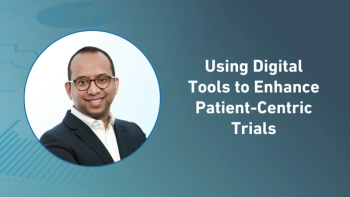
Inside the Recruitment Bottlenecks Driving Trial Delays
Gain insight into how principal investigator scarcity, frequent protocol amendments, and uneven site performance undermine enrollment and extend timelines.
In a recent video interview with Applied Clinical Trials, Matt Holms, vice president of sales at Citeline, discussed the persistent barriers slowing patient recruitment and how technology and data-driven strategies can help modernize clinical trial operations. He outlined factors such as site performance variability, investigator scarcity, and protocol complexity as key contributors to trial delays, emphasizing the need for more realistic protocol design informed by real-world data. Holms explained how AI and tokenization can strengthen patient–protocol matching, streamline feasibility, and support responsible data use. He also highlighted the importance of therapeutic area–specific recruitment approaches, sponsor-led site selection oversight, and engagement with non-research healthcare providers to expand patient access—calling for greater industry collaboration to create a more efficient and equitable recruitment ecosystem.
The below interview transcript was lightly edited for clarity.
ACT: Patient recruitment continues to be a major source of trial delays. What do you see as the primary barriers that sites and sponsors are still struggling to overcome?
Holms: Sure. Some of what I’ll share, I don’t think is new to some people, but I think it’s important to restate the climate of what we’re dealing with. And I think there are multiple categories here. There are the sponsor challenges, which are being driven by increased competition. So you have so many more sponsors doing studies, and the duration of the studies that they’re working on is longer than they have been in the past.
Many of these protocols end up requiring amendments. Typically, it’s greater than 85% of studies that require a major amendment, which, if you go back and look through, talking to different sponsors and CROs, sometimes these amendments don’t have any impact on the recruitment that they were intending, and they really slow things down pretty significantly. So that’s a big part of this.
But you also have the typical sort of performance at the site level from an enrollment standpoint, where—and this is all well published; Tufts also publishes this a lot—you’ll see half of your sites meet or exceed their enrollment. Typically, maybe a small percentage of that half are high performers, and then the other half either don’t recruit a single patient, or they will under-enroll.
And if you talk to sponsors, a lot of them will tell you the sites that don’t enroll any patients typically are actually not as bad of a sunk cost because they can close them. And the ones that enroll just one patient require pretty extensive monitoring for the bulk of the study.
So these are the same things that everybody keeps seeing. But I think the piece that nobody seems to really kind of anchor into is that, at least in the US specifically, there is an enormous scarcity of principal investigators and people who actually participate.
Some of the statistics I referenced recently at DPHARM, doing some research on this—ACRP, their 2022 clinical research report—they had an article where they documented something like 4% of healthcare providers in the US do clinical research, which means 96% of the patients everybody’s looking for do not exist in these databases of the sites which everybody seems to constantly be focused on.
We have to hire these sites. And you don’t have new researchers coming into the space. There’s a really well-documented source—I think it was Contemporary Clinical Trials Communications—they published this in 2017, where, over a 16-year span, almost 173,000 principal investigators who have to file their 1572 FDA form—50% of them were one study and done.
So you have this continued scarcity of sites, but everybody’s trying to find the best sites. And I think the reality is that, for a long time, assuming that you’re going to recruit and enroll your study with 100% of patients being the patients that exist at your study site has not been the case for a very long time.
Newsletter
Stay current in clinical research with Applied Clinical Trials, providing expert insights, regulatory updates, and practical strategies for successful clinical trial design and execution.





.png)



.png)



.png)
.png)
